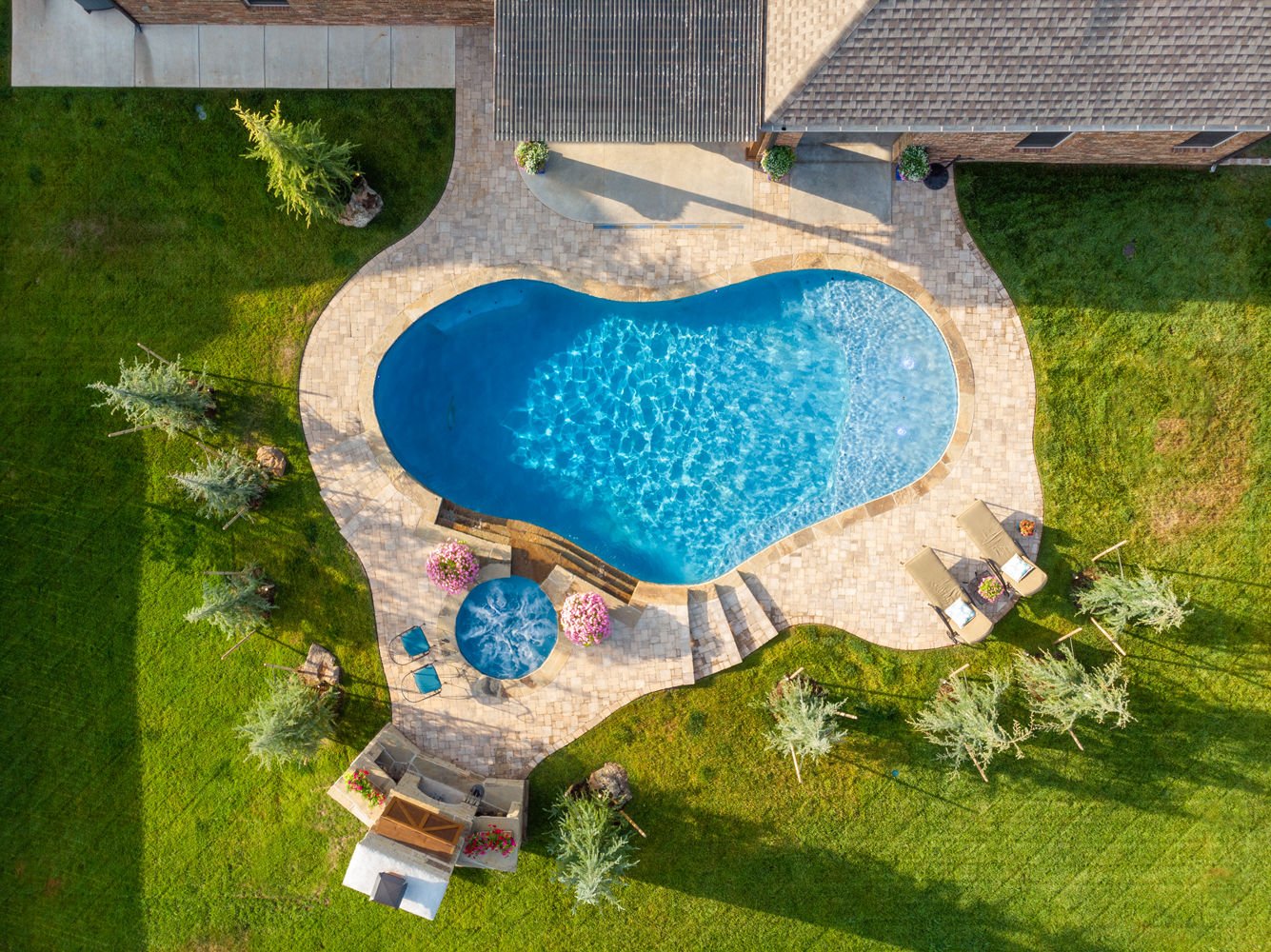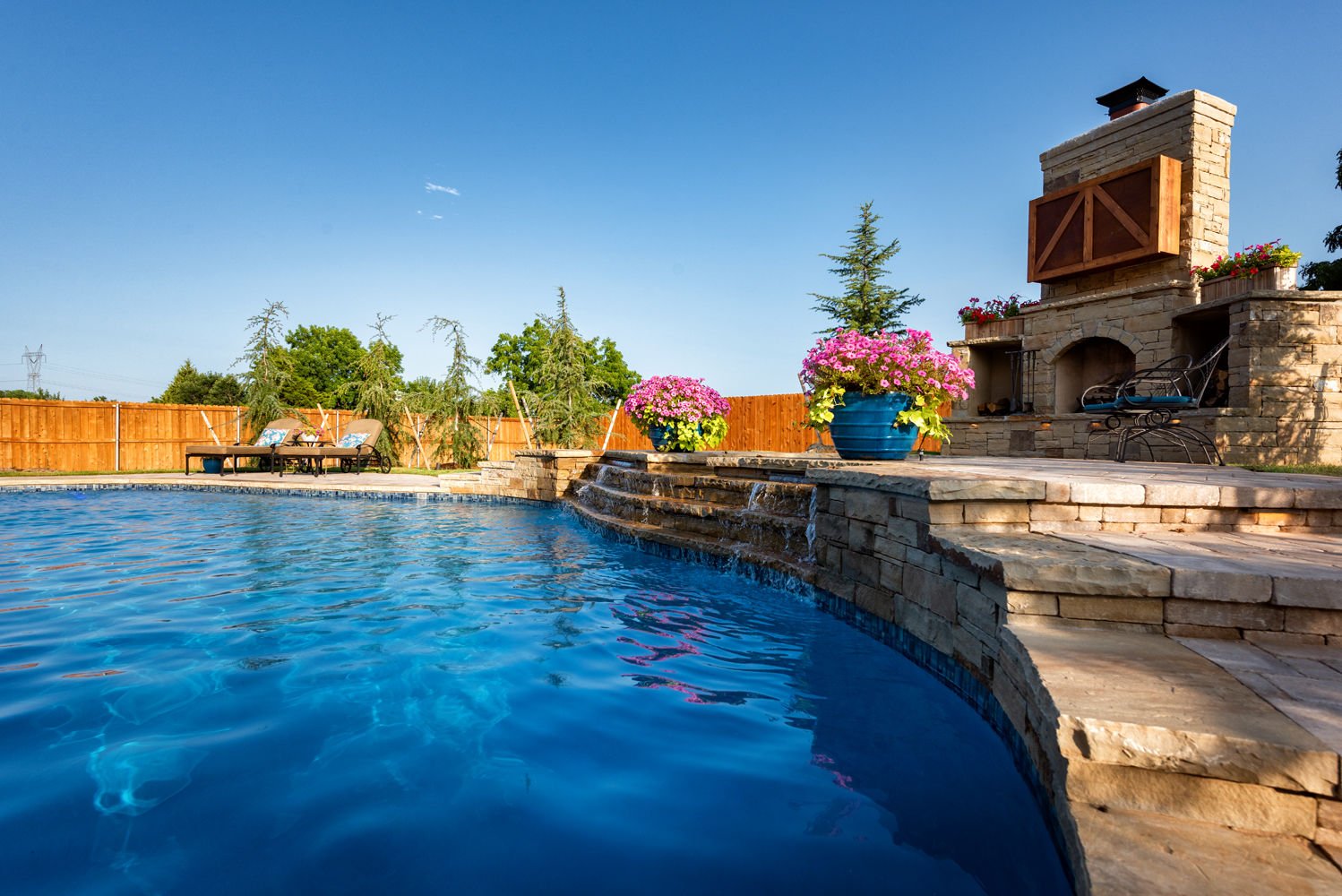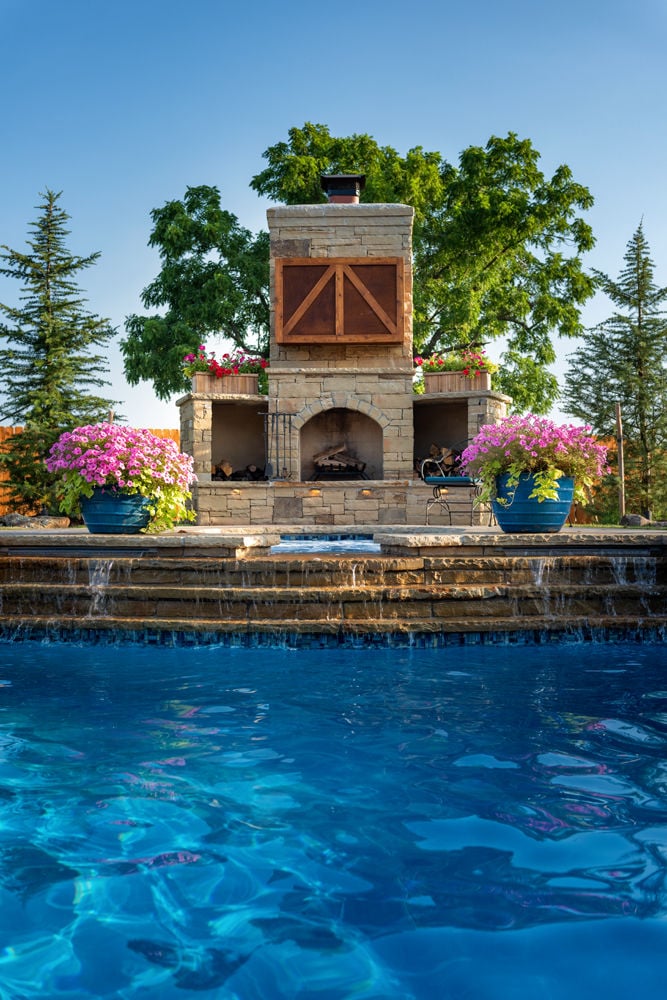 Designing and installing your own inground pool is an exciting way to enhance your backyard and add a fun element to your outdoor living space! In this article, answer the question, "How much does an inground pool cost?"
Designing and installing your own inground pool is an exciting way to enhance your backyard and add a fun element to your outdoor living space! In this article, answer the question, "How much does an inground pool cost?"
Whether your vision involves hosting summer pool parties or being able to enjoy an early morning swim, an inground pool can add both beauty and function to your backyard. However, many homeowners are hesitant when it comes to the cost of an inground pool.
Here, we break down the driving factors behind the cost and help you decide on a design that makes sense for your home and your budget.
You can also learn the cost with our free calculator!
INGROUND POOL CALCULATOR >
What’s an Inground Pool?
In simple terms, an inground pool is a pool installed within the ground so that its edges lay flush with your lawn. These are easy to distinguish from above-ground pools, which extend above your grass or concrete.
Inground pools are a popular choice for homeowners as they allow for more versatility in customization, design, and aesthetic appeal.
The Basics
The cost of installing an inground pool varies greatly depending on factors like material, shape, size, and installation requirements. This means that homeowners can maintain a degree of control over the price by considering their pool's characteristics.
Overall, the estimates for building a simple inground pool are generally affordable, especially with financing. However, don’t forget that specialized designs and customizations are guaranteed to require more work and are be reflected in the price— think hot tubs, adjustments to fit your landscape, fire features, and lighting features.

Pool Size and Shape
The shapes of inground pools fall into two categories:
- Geometric pools are the simplest form, as they keep to a traditional rectangular shape. This option can be a great choice if you have a wide, open backyard to work with.
- Freeform pools can help accommodate and complement more dynamic backyards, making the possibilities nearly endless!
Freeform pools come in shapes with free-flowing lines and resemble a lagoon or “kidney” shape. The goal is to give your pool a natural feel, similar to an oasis. If you opt for a freeform inground pool, your design and construction team will ensure that your pool follows the natural landscape of your property. Though freeform pools can become much more complex to build, they offer flexibility when it comes to getting creative, such as by adding waterfalls.
What Types of Materials Are Used to Build Inground Pools?
The three basic building materials used for installing an inground pool are:
- Concrete
- Vinyl
- Fiberglass
Concrete
Concrete pools are incredibly durable and can accommodate just about any customization you can come up with. This material is effective in constructing larger pools—in fact, you can use concrete to build an Olympic-sized pool in your backyard if you have the space and if you want to!
Concrete is a sturdy component and is highly resistant to damage, even with sharp tools and objects. While concrete can serve as a foundation for decorative materials such as tile, it can also be an aesthetically pleasing choice on its own.
Be aware that the installation process is genuinely longer than it is for vinyl or fiberglass, especially if your pool design includes customizations. Additionally, for repairs, you need an experienced team to remedy any issues.

Vinyl
Generally speaking, vinyl is your least expensive option.
Vinyl may be an economical choice in terms of up-front costs and faster installation, but be aware that liners typically have to be replaced every ten years. Another thing to consider is that vinyl is much more susceptible to algae growth than fiberglass.
Fiberglass
Fiberglass is a relatively durable material with a quicker installation process. It is also more resistant to algae growth than other materials.
Fiberglass pools may also come with longer warranties than other materials, so be sure to check that information before making your decision.
However, fiberglass has limited choices in terms of style and dimensions. For example, if your dream pool includes customizations like a kidney bean shape with water fountains and a hot tub, you’re going to need to choose concrete.
What Costs Are Associated With the Installation?
Installing an inground pool is a multi-step process and may require expertise and labor from different teams. For example, when having an inground pool installed, you’ll have to account for these factors
- Materials for the pool shell
- Incorporating your pool into your plumbing
- Construction equipment (like cranes and excavators)
- Excavation, construction, and design teams
- Pool chemicals and maintenance
- Your water bill
- Required building permits
In some cases, this can add up to ten thousand or more dollars. However, one of the biggest determining factors of how much it costs to build an inground pool is the type of materials you want to use.
While choosing to install an inground pool for your home is an exciting decision, it can also be overwhelming if you don't choose the right contractor. The process is a huge investment, so be sure to consider your overall vision for the pool. When you’re ready, be sure to have a team of experts to guide you along the way.
Calling In The Experts
Building the pool of your dreams is both exciting and daunting. That’s why so many people turn to the experts rather than doing it themselves.
If you’re considering building a new pool, Spartan Pool and Patio is your one-stop shop for helping turn your vision into a reality. We’d love to talk to you today!

